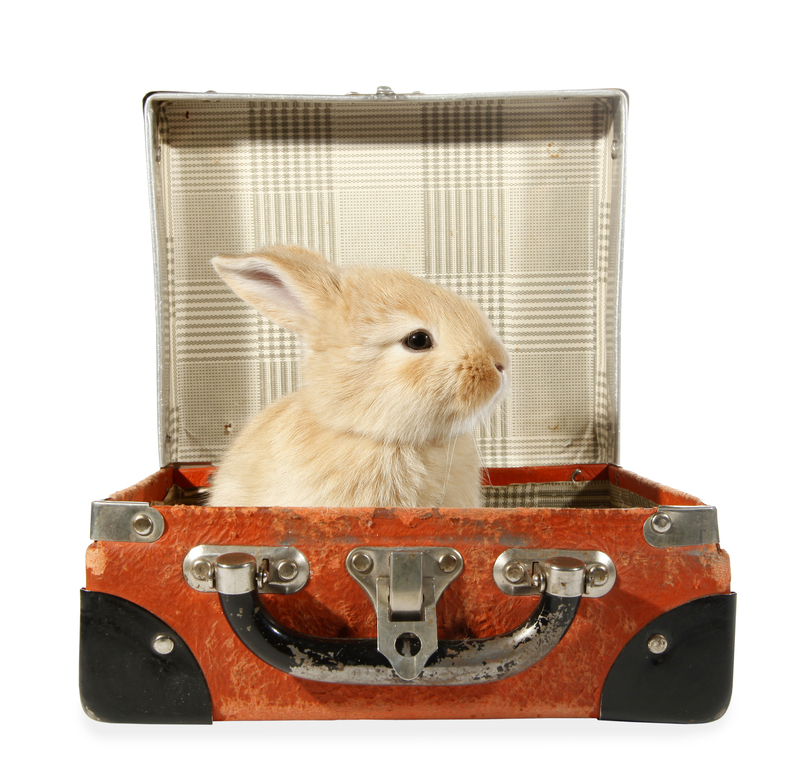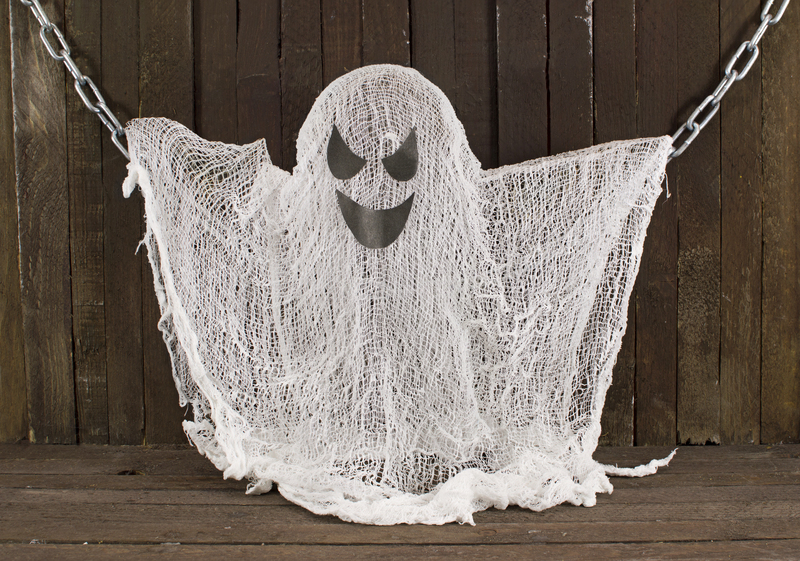Packing Wisely: Keys to a Hassle-Free House Move
Posted on 07/06/2025
Packing Wisely: Keys to a Hassle-Free House Move
Moving to a new home is an exciting chapter in life, but it can also be one of the most stressful events if you're not properly prepared. Packing wisely is the cornerstone of any successful, hassle-free house move. With strategic planning, organization, and the right methods, you can make your big move smooth, systematic, and even enjoyable. In this comprehensive guide, discover effective packing tips for a house move, organizational checklists, and clever hacks that ensure nothing is left behind--except the stress.

Why Packing Wisely Matters in a House Move
Whether you're relocating your family across town or moving into your first apartment, the way you pack your belongings can make or break your moving experience. Efficient packing not only protects your items from damage but also saves you time, money, and effort during both the moving and unpacking process. By adopting smart techniques and avoiding common pitfalls, you'll experience a smoother transition to your new home.
Benefits of Packing Smart for Your Move
- Reduces Time and Stress: A streamlined packing plan keeps you from feeling overwhelmed by last-minute chaos.
- Prevents Damage: Properly packed boxes ensure your possessions arrive safely.
- Speeds Up Unpacking: Organized boxes make it easier to settle into your new space.
- Lowers Moving Costs: Efficient packing means fewer boxes and lower transportation expenses.
- Ensures Nothing Is Left Behind: Systematic packing prevents forgotten items.
Essential Packing Supplies Checklist
Before you begin boxing up your life, gather the right packing materials to ensure a smooth move. Having everything on hand prevents delays and protects your valuables. Use this packing checklist for a house move:
- Sturdy moving boxes in various sizes
- Packing tape and dispenser
- Bubble wrap and packing paper
- Permanent markers for labeling
- Scissors and utility knife
- Ziploc bags for small parts and hardware
- Furniture blankets or pads
- Stretch wrap for securing drawers and doors
- Trash bags for non-breakables and clothing
- Labels or color-coded stickers for sorting rooms
Tip: Consider eco-friendly alternatives such as renting reusable crates or using towels and linens as protective padding.
Step-by-Step Guide to Packing for a House Move
Step 1: Declutter and Purge
The golden rule of packing for a house move is to move only what you truly need. Go through each room and create piles: keep, sell/donate, and discard.
- Clothing: Donate anything you haven't worn in a year.
- Books: Pass on novels you've finished or won't read again.
- Electronics and Appliances: Sell or recycle unused or broken items.
- Sentimental Items: Keep only the most meaningful; take photos of the rest as a memory.
Decluttering before you start packing reduces the number of boxes and labor required, making your move faster and less expensive.
Step 2: Organize Room by Room
A systematic, room-by-room approach is the key to stress-free packing. Focus on one area at a time to avoid chaos and misplaced items.
- Start with least-used rooms: Begin with the attic, basement, garage, or guest room.
- Pack essentials last: Leave the kitchen and bathrooms until the final days.
Step 3: Use Smart Packing Techniques
- Box size matters: Pack heavy items like books in small boxes; lighter items in large boxes.
- Distribute weight evenly: Avoid overpacking to prevent box breakage.
- Fill gaps: Use towels, clothing, or packing paper to cushion objects and prevent shifting.
- Wrap fragile items individually: Use bubble wrap, newspaper, or soft linens for protection.
- Label clearly and consistently: Mark each box with its destination room and a brief description of contents.
Step 4: Special Care for Valuables and Fragile Items
Use extra caution when packing breakables, electronics, and valuable items. Apply the following packing methods:
- China and glassware: Wrap each piece separately and pack upright.
- Art and mirrors: Place in custom-fit boxes with ample padding. Label as "Fragile."
- Jewelry and important documents: Move these yourself in a secure bag or box.
- Electronics: Use original packaging if you have it. Cushion screens with soft cloths.
Step 5: Pack an Essentials Box
Set aside one or two boxes with moving day necessities--items you'll want immediately upon arrival at your new home.
- Toiletries and medicine
- Bed linens and pillows
- Change of clothes
- Chargers and electronics
- Snacks and water
- Critical documents (leases, IDs, moving paperwork)
- Tools and cleaning supplies
Having essential supplies easily accessible can reduce the first-night stress after your move.
Packing Mistakes to Avoid During a House Move
- Procrastinating: Underestimating the time it takes is a common pitfall. Start early!
- Overfilling boxes: Heavy boxes increase the risk of injury and damage.
- Forgetting to label: Unmarked boxes make unpacking tedious and frustrating.
- Packing forbidden items: Movers often prohibit perishable, flammable, or hazardous goods.
- Ignoring insurance: Consider transit insurance for high-value belongings.
Time-Saving Packing Tips for a Smooth House Move
- Set a timeline: Assign specific packing tasks to each week and stick to your schedule.
- Enlist help: Delegate rooms to different family members or friends for efficiency.
- Take photos: Photograph electronics' wiring setups and furniture assemblies for easy reinstallation.
- Keep hardware handy: Place screws and bolts in labeled ZIP bags and tape them to the item they belong to.
- Don't empty drawers completely: Secure lightweight, non-breakables inside with stretch wrap.
- Pack hanging clothes as-is: Use wardrobe boxes or bundle garments with big garbage bags.
- Use suitcases for heavy items: Wheels make transporting books or small appliances easier.
Eco-Friendly Packing for Conscientious Movers
Eco-conscious moving is gaining popularity. Here's how to pack wisely for a house move while protecting the environment:
- Rent reusable moving boxes instead of buying cardboard.
- Repurpose containers like baskets, laundry bins, or suitcases.
- Cushion items with towels or old clothing rather than plastic wrap.
- Recycle packing materials once your move is complete.
What to Unpack First After a Move
A well-organized packing strategy makes unpacking easier. Start with:
- Essentials box (first-night necessities)
- Kitchen items and basic cookware
- Bedding and bedroom essentials
- Bathroom supplies
- Work or children's materials
Focusing on these areas will help you settle in more quickly and comfortably.

Frequently Asked Questions on Hassle-Free House Packing
How early should I start packing before my house move?
Ideally, begin decluttering and packing non-essentials about 4-6 weeks before moving day. This gives you ample time to pack thoughtfully and minimize stress.
How can I keep track of packed boxes while moving?
Number each box and keep a corresponding list or spreadsheet noting its contents and destination room. For even easier tracking, try using color-coded labels or a moving app.
Should I hire professional packers for my house move?
If budget allows, professional packers can save significant time, protect fragile items, and use efficient techniques. However, with careful planning, DIY packing can be just as effective for most local moves.
What items should not be transported by movers?
Most moving companies prohibit hazardous materials (like paint and chemicals), food, live plants, and valuables such as cash or important documents. Check with your mover for a full list of non-allowable items.
How should I label my boxes for a smooth move?
Label at least two sides of each box with the room name and main contents. For fragile boxes, write "Fragile" clearly and indicate which side is up. Consider using colored stickers or tape to designate each room.
Final Thoughts: Packing Wisely for Stress-Free House Moves
A successful move is all about preparation and organization. By taking the time to declutter, use effective packing materials, and employ smart labeling and loading techniques, you can ensure your belongings arrive safely and unpacking is a breeze. Remember, packing wisely isn't just about putting items in boxes--it's about making your entire house-moving experience hassle-free and enjoyable.
Start early, stay organized, and don't hesitate to ask for help along the way. With these keys to a stress-free house move, your journey to your new home will be filled with excitement instead of headaches. Happy moving!


